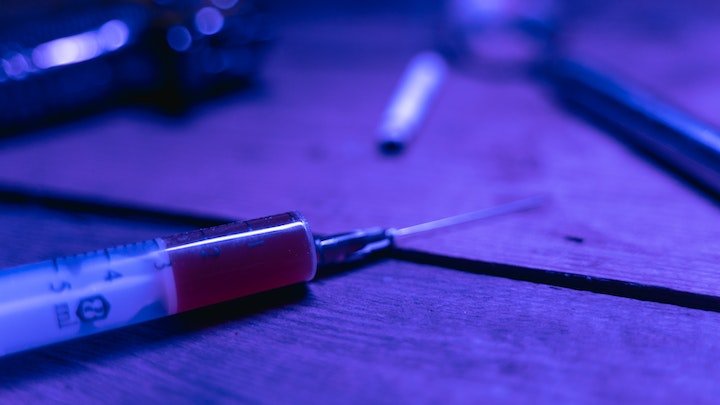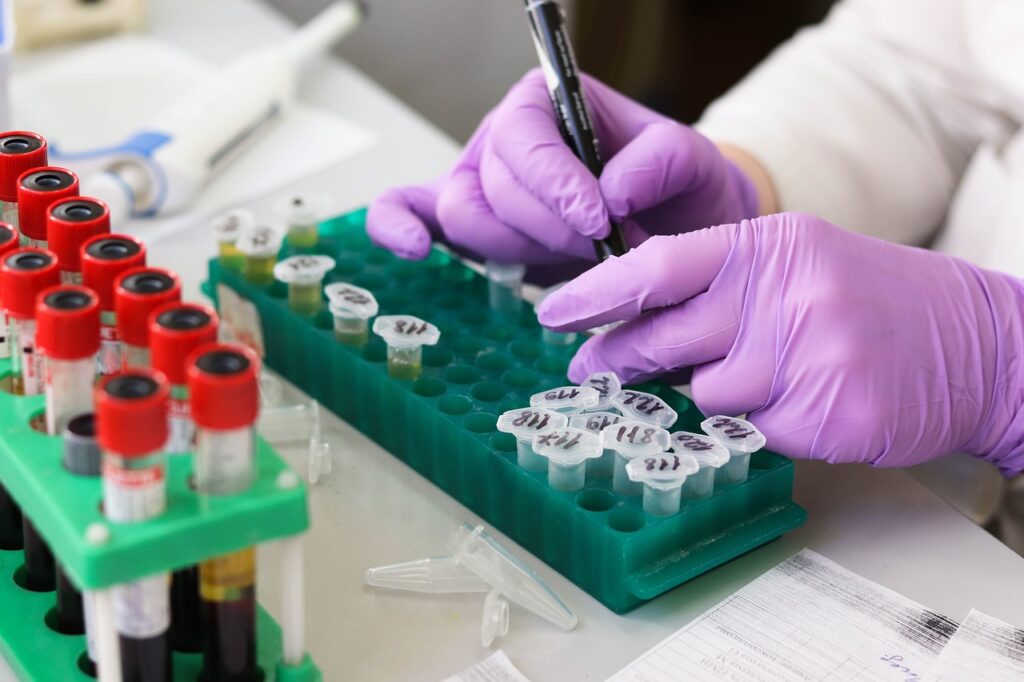Meth, short for methamphetamine, is a powerful stimulant that affects the central nervous system. It was originally developed from amphetamine to be used as a nasal decongestant (1).
Methamphetamine causes its users to feel increased energy, alertness and talkativeness and unlike amphetamine, it opens the blood-brain barrier (2) – meaning much more of the substance reaches the brain, making it more potent and dangerous than amphetamine and much more likely to be misused.
How is Meth Used and How Long Does it Take to Feel the Effects?

Meth can be used in a variety of different ways, it can be injected, smoked, snorted or swallowed. Some people also choose to insert the drug into their rectum – this is known as ‘boofing‘.
1. Injecting Meth

When meth is injected, the effects can be felt immediately. This happens because it is injected directly into the bloodstream and reaches the brain quickly. Using meth in this way causes an intense, euphoric high.
2. Smoking Meth
Smoking meth also allows the substance to reach your brain quicker and will also result in an immediate rush of pleasure.
3. Snorting Meth
Snorting meth causes a high, but not one as intense as the result of smoking or injecting the substance. When meth is snorted, users often feel the effects within several minutes.
4. Swallowing Meth

Swallowing meth also produces a less-euphoric high. Users normally feel the effects of meth within 20 minutes after swallowing the substance.
5. Inserting Meth Anally
Some people prefer to insert meth anally, either by way of a needleless syringe or a tampon soaked in the substance. Using meth this way usually produces effects within 5 minutes, however, some reports suggest that it could be as long as 20 minutes before an effect is felt.
It is important to note that inserting drugs into your rectum is dangerous and can result in toxicity and drug poisoning (3).
What is the Half-Life of Meth?

A half-life is the amount of time it takes for the concentration of the drug in your system to reduce by exactly 50%. Experts use the half-life to calculate how long it will take for each substance to be completely removed from your body.
The half-life of methamphetamine ranges from between 6 hours and 15 hours (4). The half-life of a drug will depend on the way the drug was administered, the amount of drug taken, the height and weight of the person using the substance as well as whether the person has built up an immunity to the substance after long periods of use.
In short, it takes up to 15 hours for the amount of meth in your system to be reduced by 50%.
How Long Does Meth Stay in Your System?

The effects of methamphetamine have been known to last for several hours; however, traces of the drug are still detectable in your system long after the effects have worn off.
The length of time meth can be detected in your system depends on several factors, such as:
- How much meth you have used
- How long you have been using meth
- How often do you use meth
- The test used to detect meth
Different tests will yield different results, for example, substances can be detected in the hair for much longer than they can be detected by a urine test.
1. How Long Does Meth Stay in Your Urine?

Meth can show up in a urine test as quickly as an hour after use. Typically, a urine test can detect meth in your system for up to 3 days after you last ingested the substance. However, if you are a heavy user, traces of meth can be detected in your urine for up to 10 days after the last use.
2. How Long Does Meth Stay in Your Saliva?
Saliva is usually collected on a cotton swab to test for substances. Testing this way can detect traces of methamphetamine up to 4 days after you last used the drug.
3. How Long Does Meth Stay in Your Blood?

In heavy users, meth can be detected by a blood test up to 4 days after it was last used. However, in casual users, a blood test can detect traces of meth up to 2 days after the drug was ingested.
4. How Long Does Meth Stay in Your Hair?
Meth can be detected in the hair follicles for up to 3 months after the substance was last used. However, it also takes longer for the substance to reach the hair follicles. Meth can only be detected in the hair around 7 to 10 days after it was used.
How to Get Meth Out Of Your System

Meth causes addiction by impacting the dopamine reward system in the brain. Over time, the brain associates meth as being the only thing that brings happiness or allows for normal function.
The only way to get meth out of your system is to stop taking it, however, stopping methamphetamine cold turkey is dangerous.
Medical professionals may suggest that you continue to take meth in smaller doses over some time until you can safely come off the substance.
Other times, a medically assisted detox may be required to help you fully come away from methamphetamine addiction. This is when methamphetamine is replaced by a different drug and your dosage is controlled and reduced over time until you no longer need any substance to feel well.
Withdrawing from methamphetamine can be dangerous and should only be done under the care and instruction of a medical professional.
Meth Withdrawal

Methamphetamine causes both a physical and psychological addiction. This means that withdrawing from this substance will cause both physical and psychological withdrawal symptoms.
Common physical symptoms of meth withdrawal are:
- Nausea and vomiting
- Chills
- Fever
- Fatigue
- Weight gain
Common psychological symptoms of meth withdrawal are:
- Confusion
- Irritability
- Anxiety and depression
- Suicidal thoughts
- Intense drug cravings
- Psychosis
Meth withdrawal typically follows a specific timeline in which anxiety, depression and fatigue begin within 24 hours after the last time the substance was used. Psychosis and intense cravings will also be high during this stage. This is known as the acute stage of meth withdrawal and can last for around 7 days.
A subacute stage follows and usually lasts for several weeks. The heightened symptoms such as fatigue, psychosis and cravings usually begin to taper off over the next few weeks. However, you may require treatment for depression or anxiety as a result of methamphetamine withdrawal.
The timeline of withdrawal symptoms as well as the severity of the symptoms depends on each person and their addiction.
Someone who has taken large amounts of methamphetamine over several months or years is likely to experience more severe symptoms than someone who has taken much less over a shorter period.
However, people react differently to substances all the time and there is no way to know how bad your withdrawal experience will be ahead of time.
How to Cope with Meth Recovery?

Withdrawal symptoms from methamphetamine can be scary and unpleasant. The best way to avoid them is to stay away from meth completely, however, if it is already too late for that and you are trying to navigate your way through meth addiction recovery, there are some steps you can take to make things easier for yourself.
1. Self-care
Taking care of your mental and physical health is an important part of addiction recovery. Making sure to shower every day seems like a small step, however, it can be good for your mental health to know you are taking care of yourself.
2. Exercise

Another way to ease anxiety is to work out regularly. This does not have to be vigorous – a simple 30-minute walk through your neighbourhood once a day is enough to help you both physically and mentally.
3. HALT
The HALT technique is commonly taught in rehab facilities and it teaches the importance of not making any decisions when you are Hungry, Angry, Lonely, or Tired.
4. Trigger Avoidance
If you have discovered that certain people or situations make you more susceptible to using harmful substances, it is a good idea to take the necessary steps to avoid these.
5. Join a Support Group

Support groups such as Narcotics Anonymous commonly happen in most towns and cities in community centres. They are open to anyone who wants to come along to share their experience and talk through any issues they may be facing. They are an excellent way to find support.
6. Get Therapy
If you feel like you need extra professional help to keep you from relapsing, you should consider treatments such as Cognitive Behavioural Therapy (CBT) or individual therapy to help you figure out the psychological cause of your addiction.
Don’t wait – Get help today

If you are struggling with an addiction to methamphetamine, or you are worried about a loved one, you should contact a member of our team today at 0800 326 5559.
Our team of dedicated friendly addiction specialists here at OK Rehab are waiting to take your call and answer any questions you have.
References
[1] National Institute on Drug Abuse – Methamphetamine Research Report – https://nida.nih.gov/publications/research-reports/methamphetamine/what-methamphetamine
[2] National Library of Medicine – The blood-brain barrier and methamphetamine: open sesame? – https://www.ncbi.nlm.nih.gov/pmc/articles/PMC4419855/
[3] National Library of Medicine – Bottoms Up: Methamphetamine Toxicity from an Unusual Route – https://www.ncbi.nlm.nih.gov/pmc/articles/PMC2672287/
[4] National Library of Medicine – Methamphetamine Toxicity – https://www.ncbi.nlm.nih.gov/books/NBK430895/





